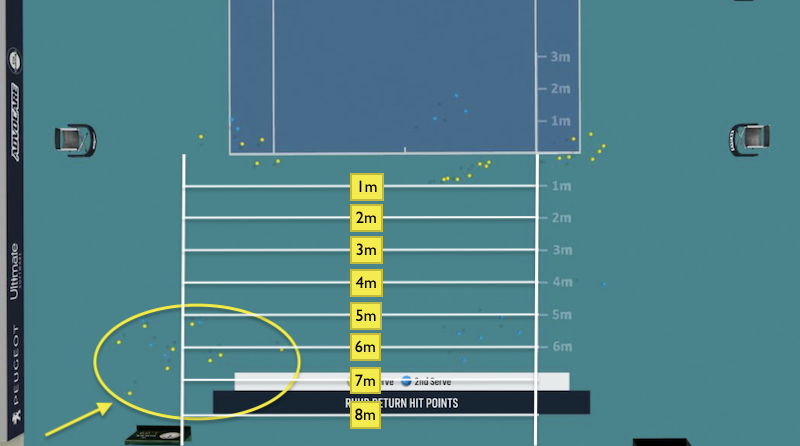Running down a lob in tennis demands not just physical agility but also sharp mental acuity and refined technique. For advanced players like Axel and Anthony, who typically employ a semi-western grip for their ground strokes, integrating specific grip adjustments into their response to lobs can be crucial for maintaining both defensive resilience and offensive potential. Here’s how to masterfully run down a lob, with special considerations for players using a semi-western grip:
General Strategy for Running Down Lobs
1. Anticipate and React Quickly: The moment you discern a lob, swiftly evaluate its trajectory. This rapid assessment and movement towards, but not directly under, the ball are fundamental to positioning yourself optimally for the return.
2. Side Movement: Veer diagonally towards the side of the lob’s path rather than retreating straight back. This approach not only keeps the ball within your field of vision for better judgment but also mitigates the risk of the ball landing behind you—a common pitfall when running directly backwards.
3. Get Behind the Ball: Strive to position yourself slightly behind the baseline or where you anticipate the ball will descend. This setup, akin to preparing for a ground stroke, affords you greater control over your return by allowing for adjustments based on the ball’s speed and bounce.
4. Lift and Carry Through: Employ a low-to-high swing to propel the ball back into the air, ensuring a high finish to your swing. This not only facilitates a deep return, compelling your opponent into a defensive stance but also gives you time to reposition for the next play.
5. Aim High and Deep: Your lob return should aim to drive your opponent backward, complicating their aggressive shot-making. Achieving depth and height with your lob can be a tactical maneuver to reclaim point control, particularly against net-assertive opponents.
Special Considerations for Semi-Western Grip Players
For players wielding a semi-western grip, such as Axel and Anthony, Coach Tim outlined the essential adjustments to manage lobs:
1. Grip Adjustment for Lob Returns: The semi-western grip, while beneficial for generating topspin, requires modification for lobs. Slightly altering the grip or the racket face’s angle by using your wrist prior to the lob can make a significant difference.
2. Open the Racket Face: Prior to the return, ensure the racket face is moderately open to counterbalance the semi-western grip’s tendency to close the racket face. This adjustment is pivotal for getting underneath the ball, particularly from stretched positions or outside the usual striking zone.
3. Finish Skywards with Follow Through: Highlight a follow-through that ascends skyward, propelling the ball high and deep into the opponent’s court. Visualize the wrist action akin to “drying your fingers,” as in basketball, to facilitate the necessary lift and depth on the lob. This technique not only aids in depth and height control but also in buying crucial time for repositioning.
Incorporating these nuanced strategies and adjustments, particularly for semi-western grip users, enriches a player’s capacity to hit lobs effectively. It transforms a defensive scenario into an opportunity to regain and dictate the point, offering an offensive edge even from the back of the court.









